Honor Award
GROUNDWORK: Primary Productivity in the Hudson River Estuary
Michael P. Frederick, Student ASLA; Samuel Kolb; Curtis McMahon; and Gena Morgis, Student ASLA Undergraduate, SUNY College of Environmental Science and Forestry
Faculty Advisors: Jamie Vanucci; Dan Reeder; and Susan Dieterlen
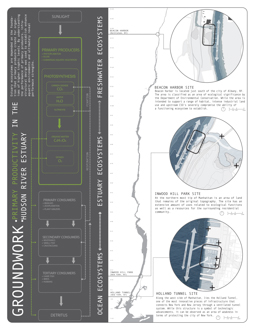 Close Me!643
Close Me!643Estuary ecosystems are depended on the foundation that primary producers create for organisms of higher trophic levels. By understanding the performance of primary producers, infrastructural design was used to establish enhance aquatic environments and ultimately reveal performance strengths.
Download Hi-Res ImageImage: Student Team
Image 1 of 10
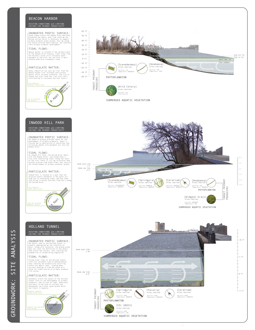
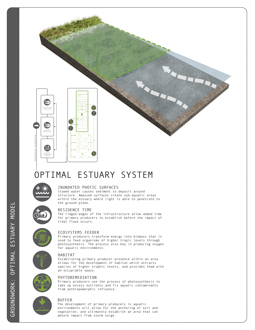
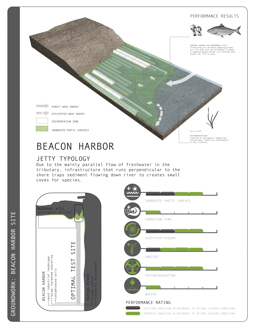
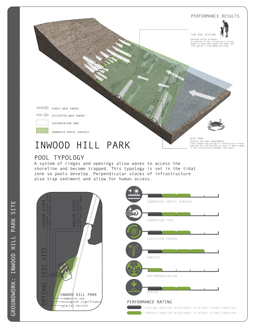
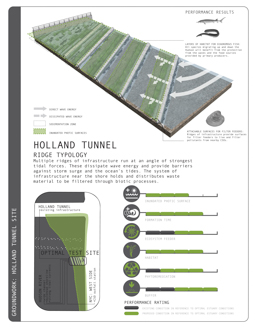
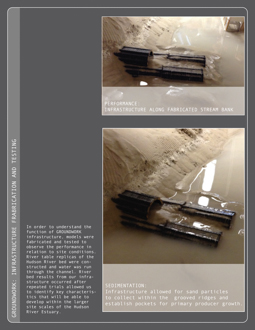 Close Me!
Close Me!GROUNDWORK: Infrastructure Fabrication and Testing
Download Hi-Res ImageImage: Student Team
Image 7 of 10
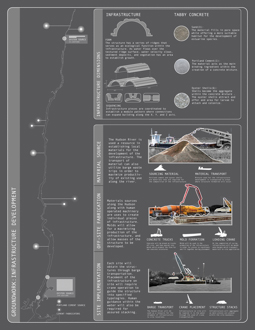
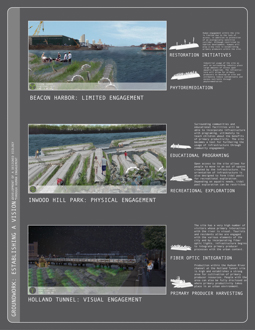 Close Me!
Close Me!GROUNDWORK: Establishing A Vision–Development of a designed ecology through human engagement.
Download Hi-Res ImageImage: Student Team
Image 9 of 10
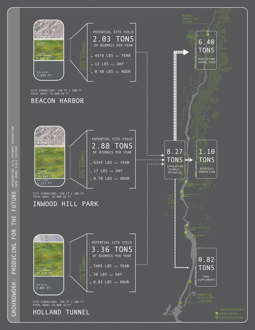 Close Me!
Close Me!GROUNDWORK: Producing for the Future – Integrating site primary production into large scale systems
Download Hi-Res ImageImage: Student Team
Image 10 of 10
Project Statement
GROUNDWORK is a project that sets the stage for a new ecological paradigm to emerge within the field of Landscape Architecture. Infrastructure design takes precedence within the project and allows site information to drive function. Ultimately, the design becomes an adaptable tool that creates cohesiveness between ecologies of the built environment and estuarine ecosystems.
Project Narrative
The Hudson River Estuary is a unique ecosystem that supports the functions of aquatic wildlife along with the economy of the extensive New York and New Jersey metropolitan areas. Major developments along the river allow for populations to acknowledge the area as a resource, but tend to disregard ecological operations such as vegetative and wildlife habitats. In an age of failing infrastructure and climate change, our project set out to lay the GROUNDWORK for design developments that acknowledge a new ecology where once disregarded elements of the estuary become the solution for many issues we are facing today, and establish a cohesive environment between human populations and estuary ecologies.
Overall analysis of the Hudson River Estuary provided key information that ultimately informed three areas of intervention. Form, flow, and matter of the Hudson River allowed for an understanding of the physiological features within the estuary and identified estuary characteristics such as tidal influence, soil compositions, and hardened shorelines. Disturbances were also considered in order to pinpoint areas where conditions were susceptible to alternation as a result of singular disturbances such as storm events of the likes of Hurricane Sandy and disturbance regimes that represent a pattern of repeated events such as sewer outfall stations. With the compilation of all the information, three sites were chosen to demonstrate the adaptable nature of GROUNDWORK infrastructure. On the island of Manhattan a site was chosen on the southwestern shore surrounding the Holland Tunnel, in addition to Inwood Hill Park, located at the northern most point of the island. The last site is Beacon Harbor, an undeveloped parcel of land just below the city of Albany, NY.
Our design approach focused specifically on primary producers within the Hudson River Estuary due to their significance in laying a foundation for habitat development. Organisms such as phytoplankton, algae, and submerged aquatic vegetation are all primary producers that photosynthesize and use sunlight to transform carbon dioxide, water, and excess nutrients into organic compounds and oxygen, which are necessary in a functioning aquatic ecosystem for organisms of higher tropic levels.
GROUNDWORK infrastructure was specifically designed to establish aquatic environments that facilitate and increase primary productivity within each of the areas of intervention. The semi-circle structures replicate a ridge like form and have smaller ridges on the surface to create a strong texture that slows down the flows of water coming into each site. Along the ridge texture, high turbid waters will be able to drop sediment and ultimately provide a base for the development of aquatic vegetation such as eel grass, widgeon grass, and wild celery. Reduced water velocity will also increase residence time within the estuary and allow for phytoplankton to reproduce before getting flushed out of the system.
Each piece of GROUNDWORK infrastructure is 3ft tall, 6 ft wide, and 12 ft long in order to establish a relationship between the Hudson River shoreline and the photic zone within tidal regimes. Photic zones are essential because this area is where primary producers have access to sunlight in order to photosynthesize and provide the necessary development for the foundation of all ecosystems. The proportions of the infrastructure were determined in response to the dynamic photic zone in relation to average 5 ft tidal changes and river bed bathymetry within each site. The aggregation of infrastructure within the photic zone increases the amount of inundated photic surfaces and creates an optimal area where primary producers have access to sunlight in order to establish growth.
At the Beacon Harbor site in Albany, NY infrastructure is implemented in order to establish an aquatic habitat for andronomous fish to spawn. Within the region, infrastructure was placed within the Normans Kill tributary that connects with the Hudson River. The tributary is classified as an ecological corridor, but industrial sites further north along the Hudson River compromise the quality of water due to CSOs and additional contaminants such as heavy metals. Placement of infrastructure was strategically designed using a jetty typology in order for sediment accumulation and increased inundated photic surfaces to support the development of aquatic vegetation. Once a primary producer habitat is established, phytoremediation can take place to facilitate a healthier aquatic environment.
Inwood Hill Park calls to the original topography of Manhattan through the remaining glacial terrain. The preservation of this land along with strong community involvement has purposed the design of infrastructure to established primary producer habitat that can physically engage the public. A tidal pool typology sets up an environment that extends into the Hudson River and as the infrastructure interacts with the tides, pools of water will highlight the presence of primary producers and allow for visitors to understand the role of primary productivity in supporting an estuary ecosystem.
The last site is located at the Holland Tunnel, on the southwestern shore of Manhattan in New York. Existing shorelines consist of a bulkhead that allows water to reach the edge of the city. With stronger storm systems developing due to climate change, New York is experiencing infrastructure failure along with declining aquatic environments due to constant development. By orienting ridges of infrastructure diagonally along the bulkhead, our infrastructure pieces will be able to intercept strong tidal surges from the open ocean and collect sediment within in the ridges so primary producers can develop. Established vegetation will increase habitat for open ocean marine life in addition to providing a buffer from future storm surge.
Development and placement of infrastructure will occur locally within the Hudson River Estuary itself. Existing barge routes will allow for the transport of infrastructure pieces to each site, and placement will be done with crane operation in addition to human guidance of the structure while under water. Each piece of infrastructure will be fabricated with molds from locally sourced material along the Hudson River, and tie into the systems that are already operating within the estuary.
Optimal primary productivity within each site yields performance benefits that can extend out into the larger operating economic systems. Primary producers such as algae can be harvested and used in a range of industries such as agricultural feed, biodiesel, and food supplements. Algae's ability to reproduce quickly, allows the primary producer to become a sustainable resource and once harvested has the power to create a closed loop system that can support large populations in terms of food and energy. Like primary producers, GROUNDWORK infrastructure begins to set the stage for design that explores the opportunity for the formation of a new ecology where people look at the information within our environment to discover sound solutions for the range of issues facing our world.
Additional Project Credits
2013 LSA 327 Design Studio at SUNY College of Environmental Science and Forestry




